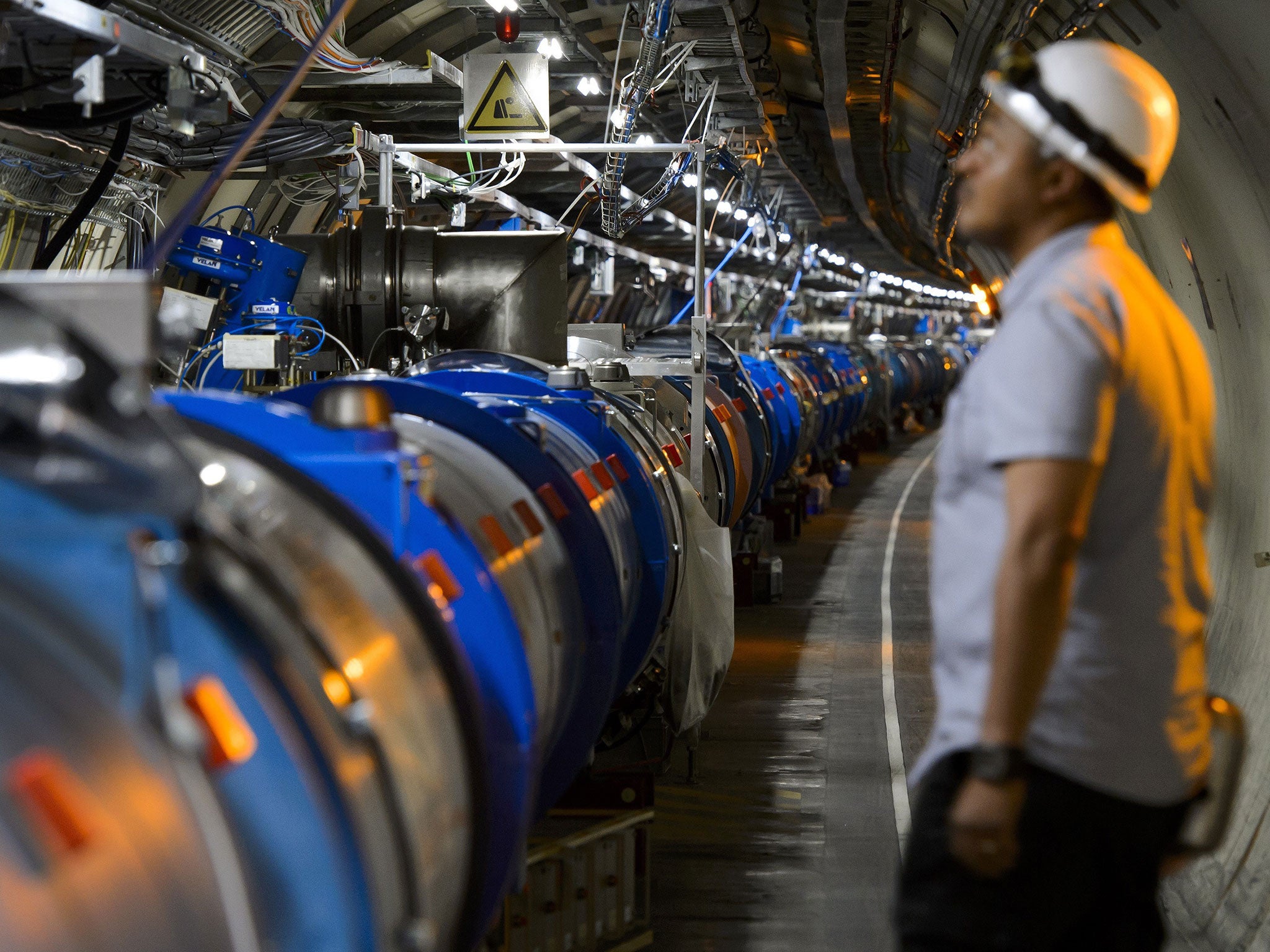Large Hadron Collider starts sending data that scientists hope will solve mysteries of extra dimensions and dark matter
The huge particle accelerator has been shut down for two years for improvements, but is now beginning its second round

The Large Hadron Collider is about to start delivering the data that scientists hope will solve some of the deepest mysteries of the universe.
It will be the first time that data is sent from the particle accelerator for 27 months. The whole experiment has been shut down for nearly two years, undergoing maintenance, repairs and improvements.
Those changes have left it able to smash atoms at with almost twice as much power as the first time around. Scientists slammed protons together at 13 tera-electron volts for the first time ever last month, and are now ready to start receiving and analysing data from those collisions.
Scientists hope that data will mark the start of “Season 2” — a whole new round of discoveries about the universe, after the successful first run. This time around, scientists will be looking further into the secrets of the universe, hoping to find out more about mysterious dark matter.
The Large Hadron Collider was switched back on at the end of April, when two beams of particles travelling a whisker below the speed of light were sent flying in opposite directions through 27 kilometres (16.7 miles) of circular underground tunnels straddling the Swiss-French border.
But the beam energy has only now been ramped up to its operating level of 13 TeV, almost twice the power used to uncover the Higgs boson two years ago.
The LHC team astounded the world with the discovery of the elementary particle that gives other particles mass, which had eluded detection for nearly 50 years.
With the ability to tap into higher energy, the scientists hope to explore mysterious realms of "new physics" that could yield evidence of hidden extra dimensions and dark matter.
Dark matter is the invisible, undetectable "stuff" that makes up 84% of material in the universe and binds galaxies together, yet whose nature is unknown.
Protons race around the LHC beam tunnels at just three metres per second below the speed of light.
The energy released when they collide together is used to spark the creation of new particles.
Albert Einstein's famous equation E = MC squared showed that energy and mass are interchangeable. Upping the energy levels at the LHC increases the chances of some of it being converted to previously undetected, heavier particles - possibly including dark matter.
The particle collisions take place in four detectors arranged around the beam ring known as Atlas, CMS, Alice and LHCb.
Atlas team leader Professor David Charlton, from the University of Birmingham, has said: "We're heading for unexplored territory. It's going to be a new era for science."
As well as searching for dark matter, LHC scientists also hope to create more and possibly different strains of Higgs boson, investigate antimatter, and test the theory of "supersymmetry" which predicts that every known particle has a more massive hidden partner.
Supersymmetry seeks to fill gaps in the Standard Model, the all-encompassing blueprint of particles and forces in the universe that has been in place since the 1970s.
Additional reporting by Press Association
Join our commenting forum
Join thought-provoking conversations, follow other Independent readers and see their replies
Comments
Bookmark popover
Removed from bookmarks